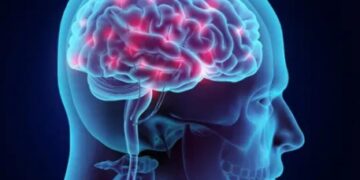Africa’s real Gross Domestic Product (GDP) is projected to grow by 4.0 per cent in 2025, in spite global economic fragility, says Afreximbank Research Report.
The 2025 African Trade and Economic Outlook (ATEO) Report, a research by Afreximbank, said Africa’s real GDP is projected to reach 4.1 per cent in 2026 and 4.2 per cent in 2027.
The News Agency of Nigeria (NAN) reports that the 2025 African Trade and Economic Outlook (ATEO) provides an in-depth analysis of Africa’s economic and trade performance, projecting the continent’s growth trajectory in the short-to- medium term.
It highlights the key macroeconomic and trade developments shaping Africa’s recovery, detailing opportunities for sustainable growth amid heightening global and domestic uncertainties.
The 2025 ATEO report said 41 per cent of African economies were projected to grow by at least five per cent, nearly double the global rate of 21 per cent, reflecting the continent’s expanding role as a driver of global growth.
According to the report, Africa’s gradual recovery would be supported by increased global demand for African exports, the disinflation trend, and the implementation of structural reforms to diversify African economies
The report said the were downside risks to the African economic outlook, including rising geopolitical tensions and fluctuating commodity prices.
“Economic slowdown in the United States and China may also impact the international financial conditions and the demand for African resources.
“Internal conflicts and climate change threaten stability and growth.”
However, the report said potential upside risks include the anticipated decline in global interest rates, which would begin in 2025 if geopolitical uncertainty remained unchanged, potentially enhancing access to financing.
“Additionally, the African Continental Free Trade Area (AfCFTA) presents an opportunity to boost economic integration and intra-African trade, reducing vulnerability to external shocks in the medium term.”
To address potential downside risks, the report suggests several short-term strategies which include adopting a nuanced and proactive monetary policy stance, and enhancing resilience against climate-related and geopolitical disruptions.
Other strategies include boosting domestic consumption alongside the service sector and accelerating the implementation of the AfCFTA agreement.
In the medium term, the report said strategies should shift toward economic diversification through strategic investments in human capital development and workforce training within key emerging sectors.
“Additionally, efforts should be made to improve economic governance, public infrastructure, and initiatives to strengthen intra-African trade dynamics.”
The report highlighted several challenges and solutions for Africa to attain stability and sustainable development amid a rapidly uncertain global landscape.
The first challenge identified was Africa’s reliance on commodity exports which had made countries vulnerable to fluctuations in world commodity prices.
“To reduce their exposure to these price fluctuations, it is crucial to accelerate the structural shift to a more diversified and resilient economy.”
The second challenge identified was debt sustainability, with the report stating that several African countries allocate over 50 per cent of their revenues to debt servicing, due to their large development financing needs.
“Ensuring debt sustainability requires more efficient public spending and prioritisation of growth-oriented investment projects.”
The report said the third challenge involved human capital and skill development.
To tackle this challenge, the report suggests that governments should invest more resources to improve healthcare and promote collaboration between the public and private sectors.
“ Strengthening training in sciences and technology facilitates skill development and talent allocation, which is essential for successful structural transformation.”
It said the fourth challenge was the weak social outcomes of economic growth in Africa caused by slow progress in poverty reduction.
“To boost poverty-reducing potential growth, improving the provision of basic public infrastructure and services is vital, reducing dependency on natural resources through structural transformation.
“Addressing inequalities must be an integral part of sustainable development goals, ensuring equitable access to quality education, healthcare, energy, transport infrastructure, and financial services.”
The final challenge identified in the report was the growing concerns about environmental degradation and the increasing frequency of extreme weather events.
“For sustainable economic development, promotion of green growth must align with comprehensive policy frameworks that address climate change adaptation and mitigation strategies, while recognizing continental development needs and challenges.”
The 2025 ATEO provides an in-depth analysis of Africa’s economic and trade performance, projecting the continent’s growth trajectory in the short-to-medium term. (NAN)









































Discussion about this post